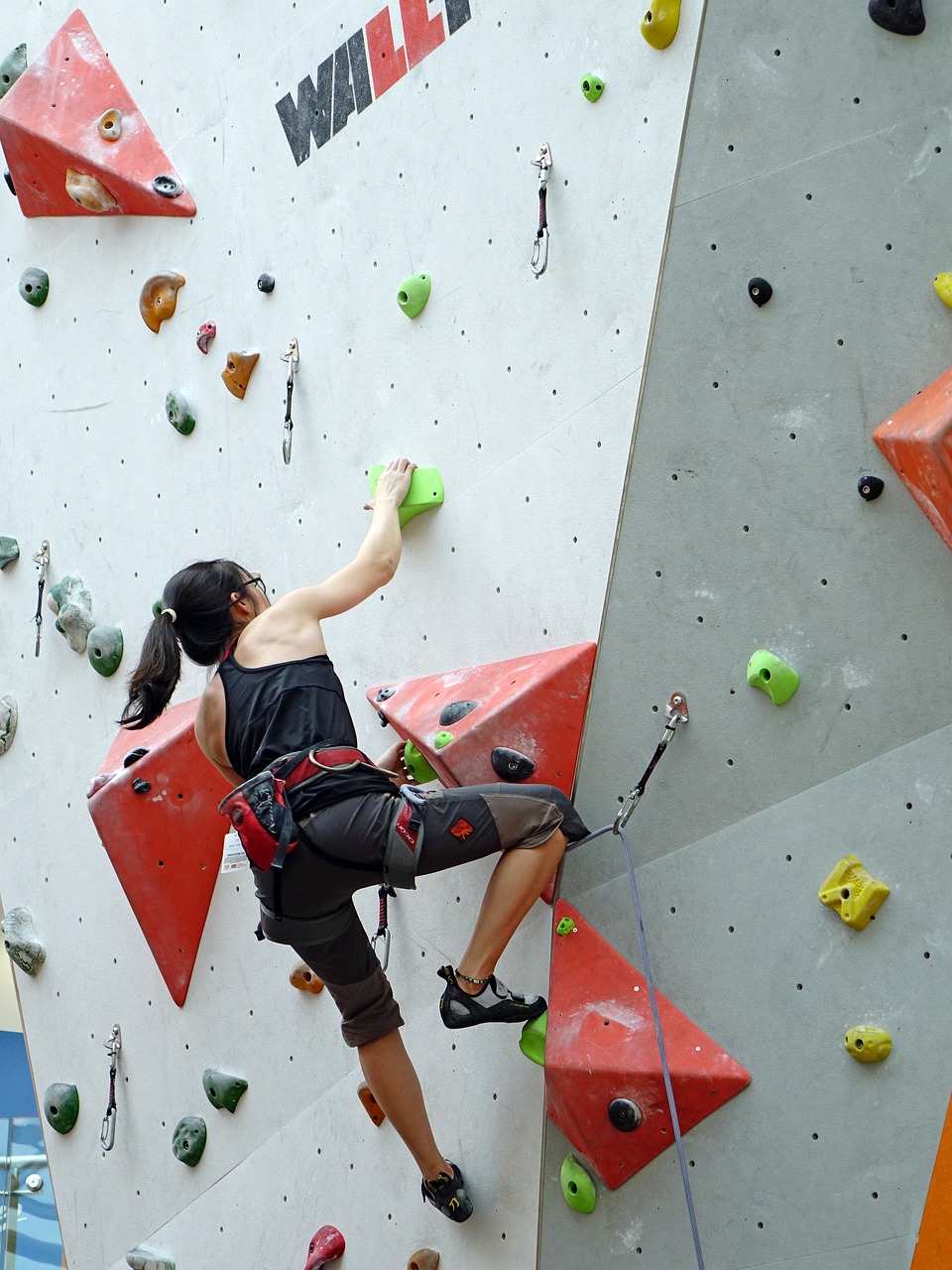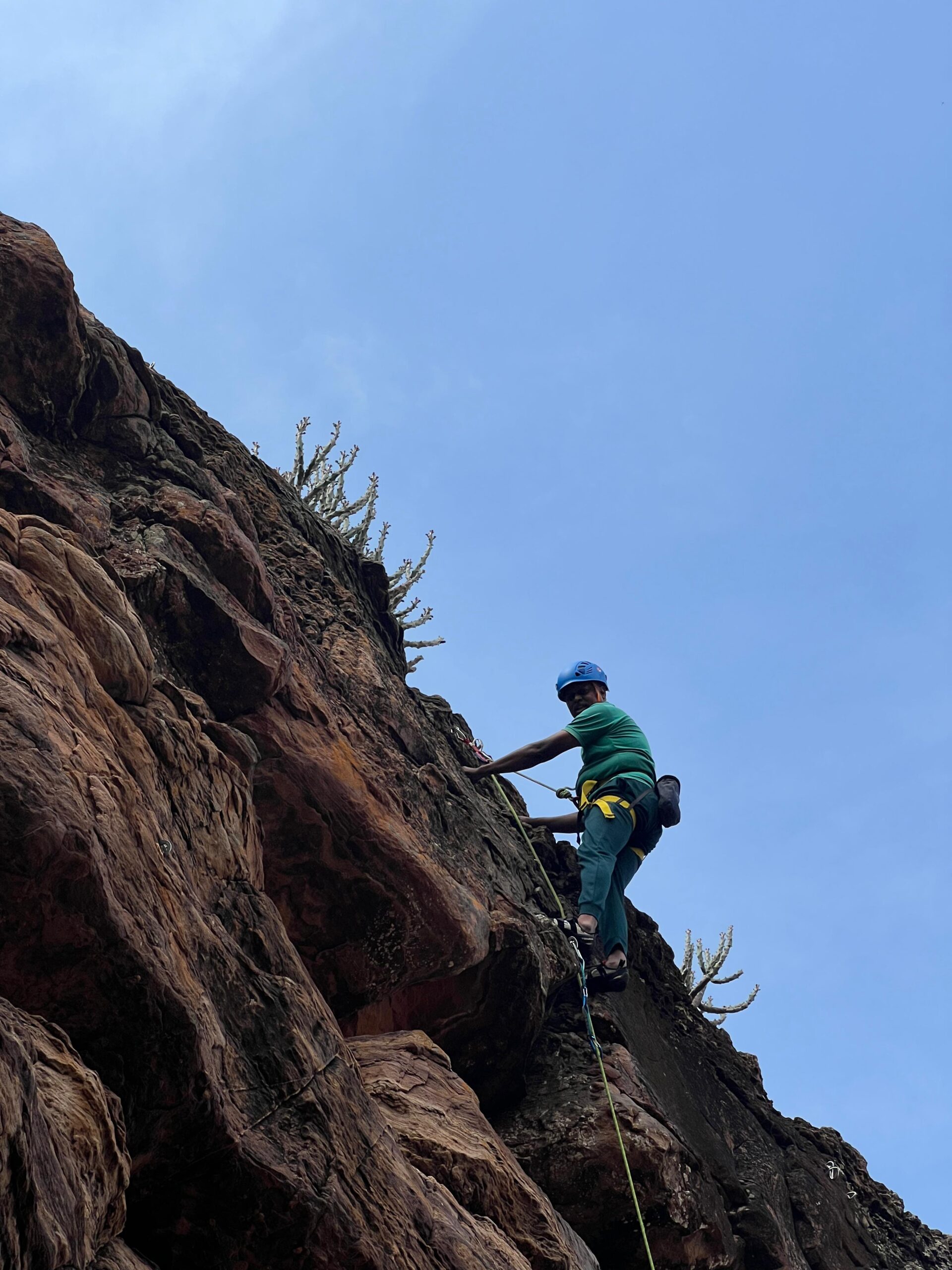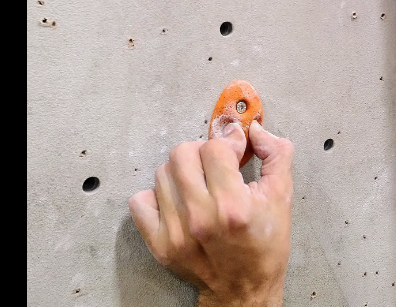Indoor Climbing and Bouldering Safety Tips: Stay Safe While Enjoying the Thrill
Indoor climbing and bouldering are exciting and accessible ways to experience the thrill of rock climbing in a controlled environment. Whether you’re looking to push your limits on challenging routes or simply enjoy the physical and mental benefits, both activities offer a great way to stay fit. However, like all sports, climbing carries inherent risks. To ensure you stay safe while enjoying your climb, it’s essential to follow key safety practices. Below are five critical safety tips to help you stay safe while indoor climbing and bouldering.
1. Double-Check Your Gear and Clothing
Safety starts with making sure you’re equipped with the right gear, and this is crucial in both indoor climbing and bouldering. While climbing typically involves ropes, harnesses, and belay devices, bouldering uses shorter walls and crash pads to protect climbers from falls.
Climbing Gear: For indoor climbing, make sure your harness fits snugly, your carabiner is locked, and your belay device is properly attached. Check that your ropes are free of fraying or wear and that your belay system is functioning correctly.
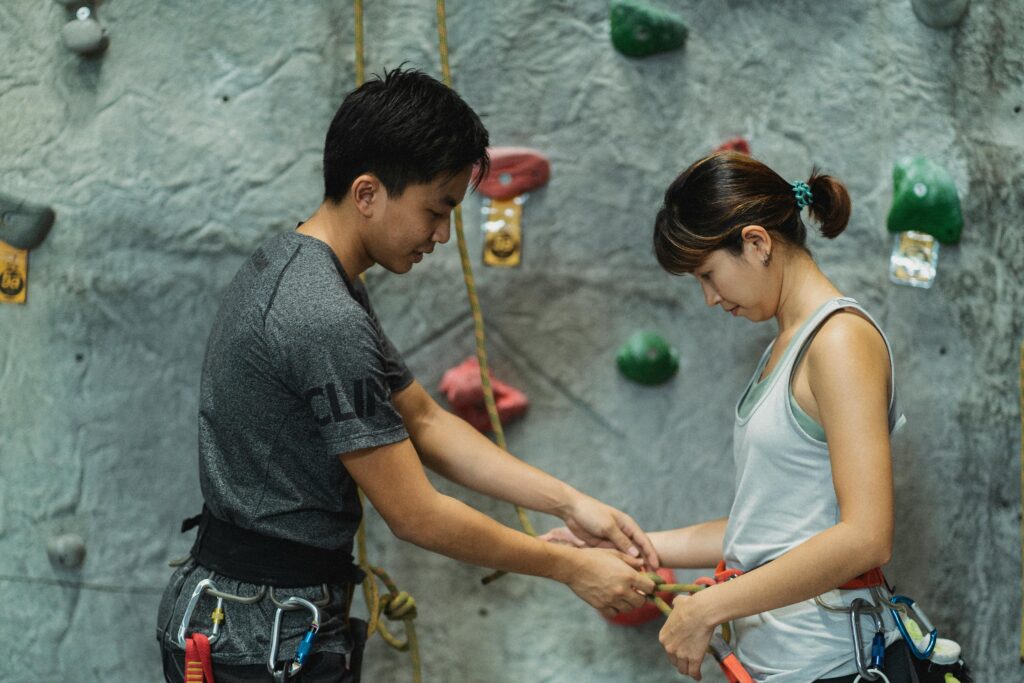
Bouldering Gear: Though ropes aren’t required, bouldering climbers must still pay attention to their shoes and clothing. Ensure that climbing shoes fit securely for maximum grip, and that your clothing isn’t too loose, which could become a tripping hazard. Proper footwear and well-fitting attire will help you climb efficiently and safely.
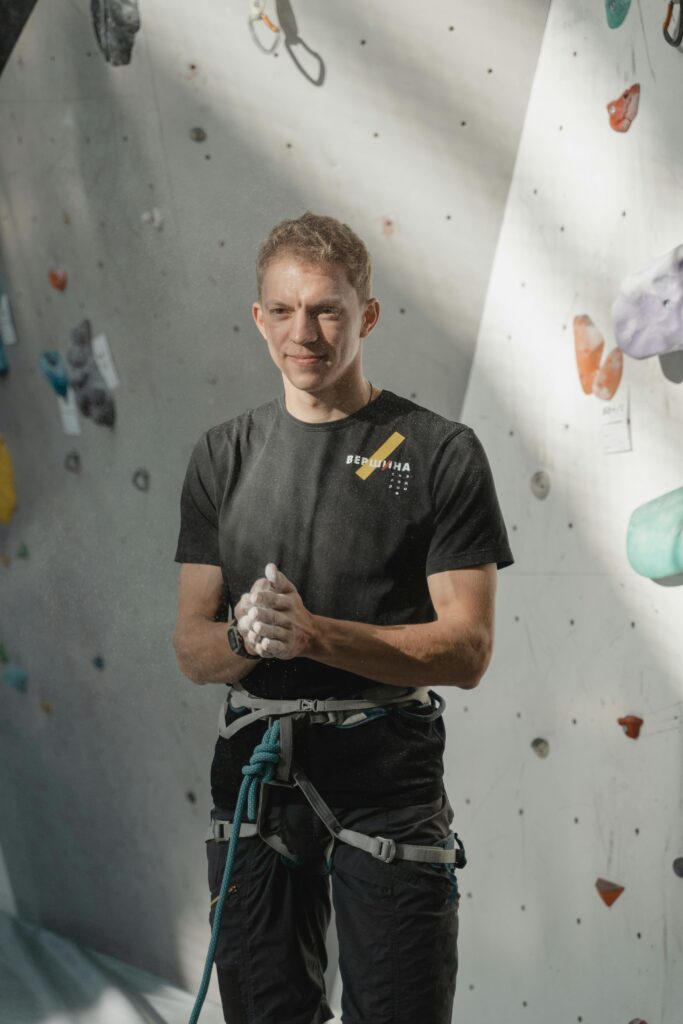
2. Learn the Proper Falling Technique
Falling is a natural part of both climbing and bouldering, but knowing how to fall safely can prevent injuries.
Bouldering Falls: Since falls are common in bouldering, it’s essential to learn the correct technique to minimize injury. Try to land on your feet first, then bend your knees to absorb the shock. Avoid reaching out with your hands to break the fall, as this can result in wrist and arm injuries. Instead, rolling backward distributes the impact more evenly.
Climbing Falls: In indoor rope climbing, your belayer is there to catch you, but it’s still important to stay calm. Keep your body relaxed during the fall and avoid grabbing the rope. Trust your belayer to manage the slack and safely control your fall.
3. Communicate Clearly with Your Climbing Partner
Clear communication between climber and belayer is essential to ensure safety, especially in indoor climbing. Before starting your climb, agree on specific commands and signals.
Standard Commands: Common climbing commands include “On belay?” (to check if the belayer is ready), “Climbing” (when you begin the climb), and “Take” (to tell the belayer to take up the slack). Using these commands helps both climber and belayer stay in sync, avoiding confusion or mistakes during the climb.
Focus and Attention: It’s crucial for the belayer to remain fully focused on the climber. Distractions can delay reactions in the event of a fall, so constant attention and communication are key to preventing accidents.
4. Be Aware of Your Surroundings
Indoor climbing gyms can get crowded, so it’s important to be aware of other climbers around you to avoid collisions.
Bouldering Awareness: In bouldering, ensure the area around you is clear before you start. Avoid standing or walking under someone who’s climbing, and check that crash pads are correctly positioned with no gaps. Make sure other climbers aren’t in your way and that the ground below you is safe for landing.
Climbing Awareness: In rope climbing, be mindful of other climbers nearby. Keep your rope clear of others’ paths and avoid creating tripping hazards. Pay attention to your surroundings to ensure a safe and smooth climbing experience.
5. Warm Up and Cool Down
Climbing is physically demanding and requires strong muscles and joints. Warming up before and cooling down after your climb will help prevent injuries and improve performance.
Warm-Up: Start with dynamic stretches like arm circles, leg swings, and shoulder rolls to prepare your muscles for climbing. Light climbing on easy routes can also help you gradually warm up.
Cool-Down: After your session, spend a few minutes stretching, focusing on your forearms, shoulders, and legs to reduce muscle soreness. Proper cool-down practices enhance recovery and flexibility, making it easier to climb the next time.
Conclusion: Climb Safe and Smart
Indoor climbing and bouldering offer a safe and thrilling way to challenge yourself physically and mentally. However, like any activity, it’s essential to follow proper safety practices. By double-checking your gear, learning how to fall correctly, communicating with your partner, staying aware of your surroundings, and warming up and cooling down, you can reduce your risk of injury and enjoy your climbing experience to the fullest.
Whether you’re just starting out or you’re a seasoned pro, following these tips will ensure your indoor climbing sessions are both safe and fun. For more advice on climbing techniques and gear, visit Alpiniahub.in.
